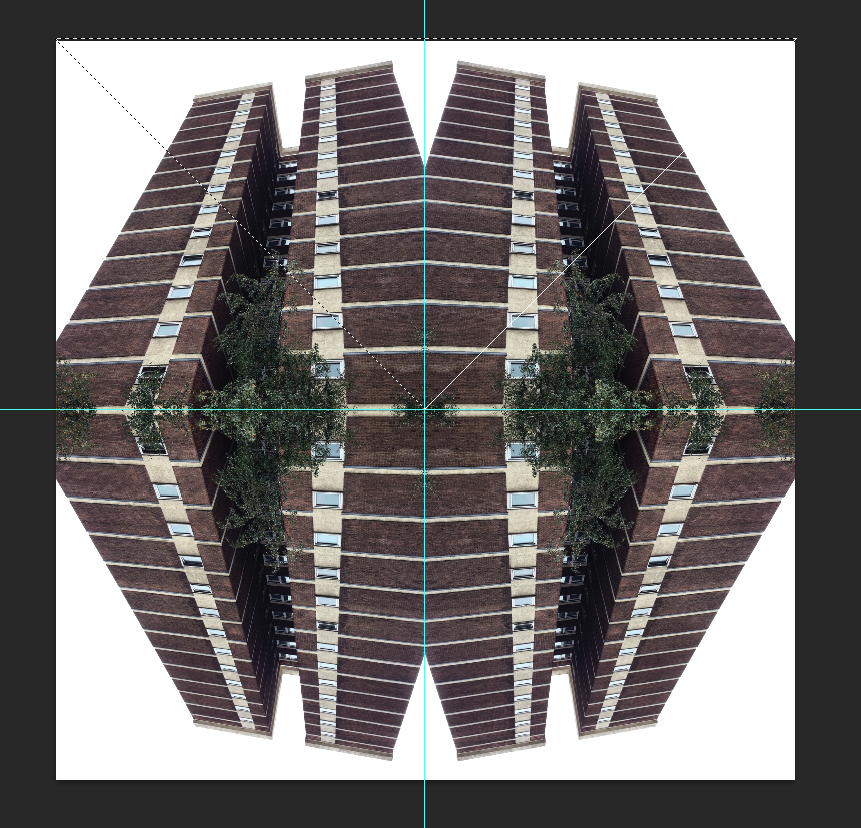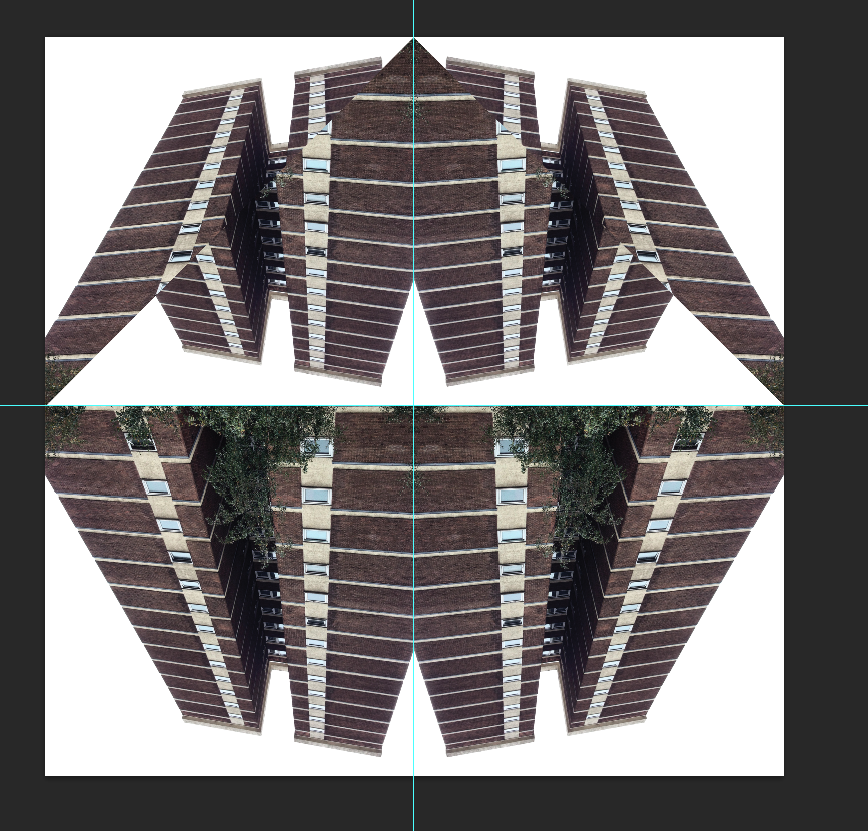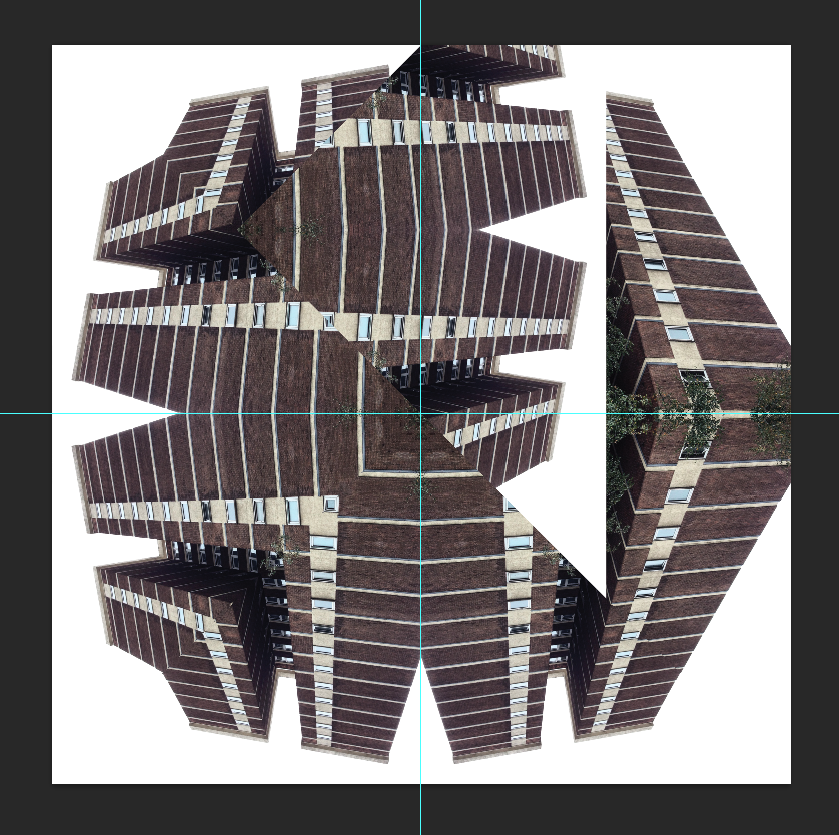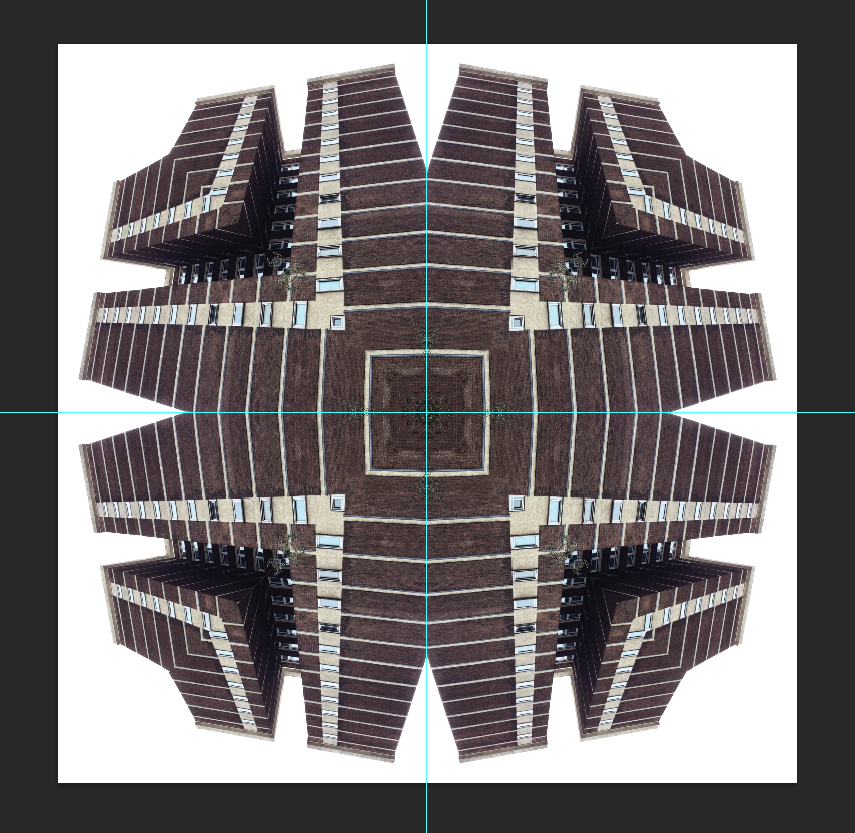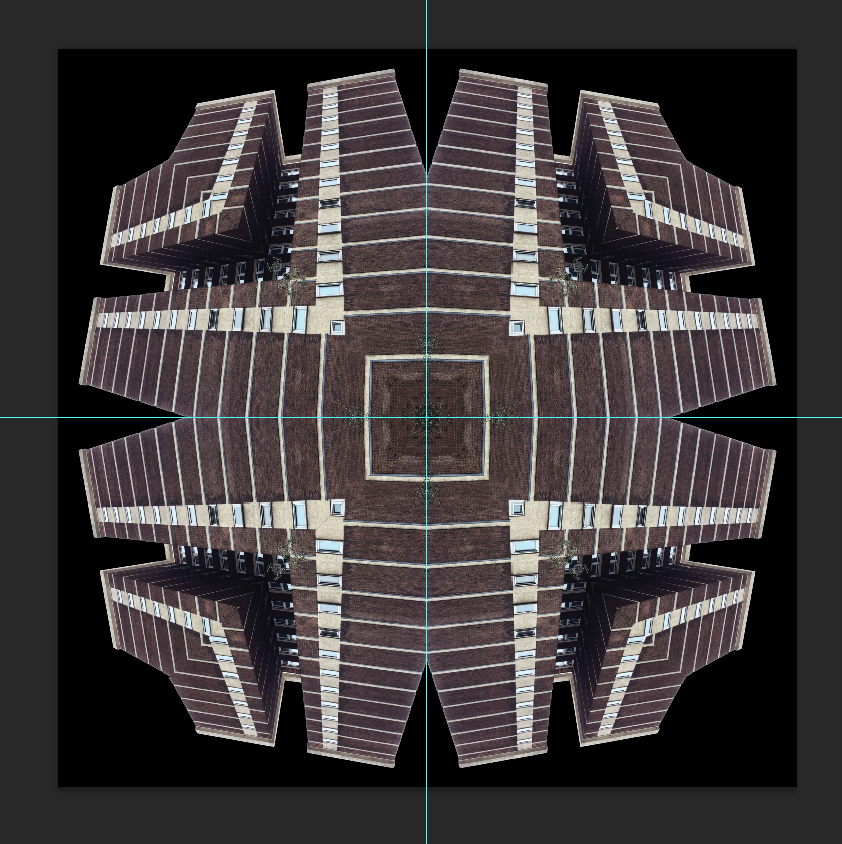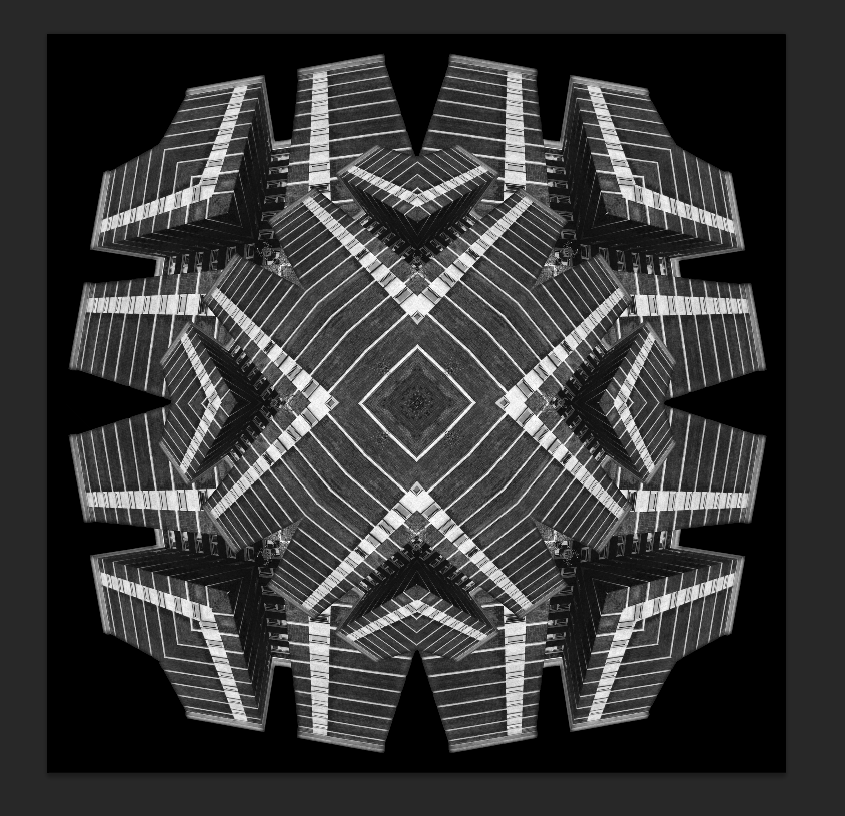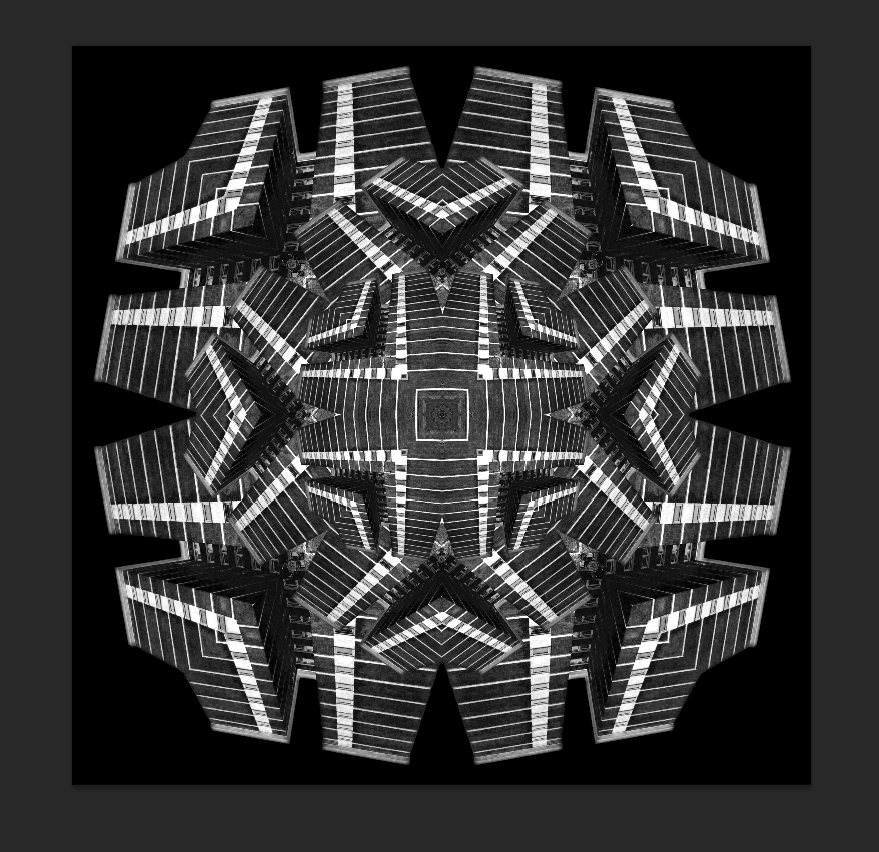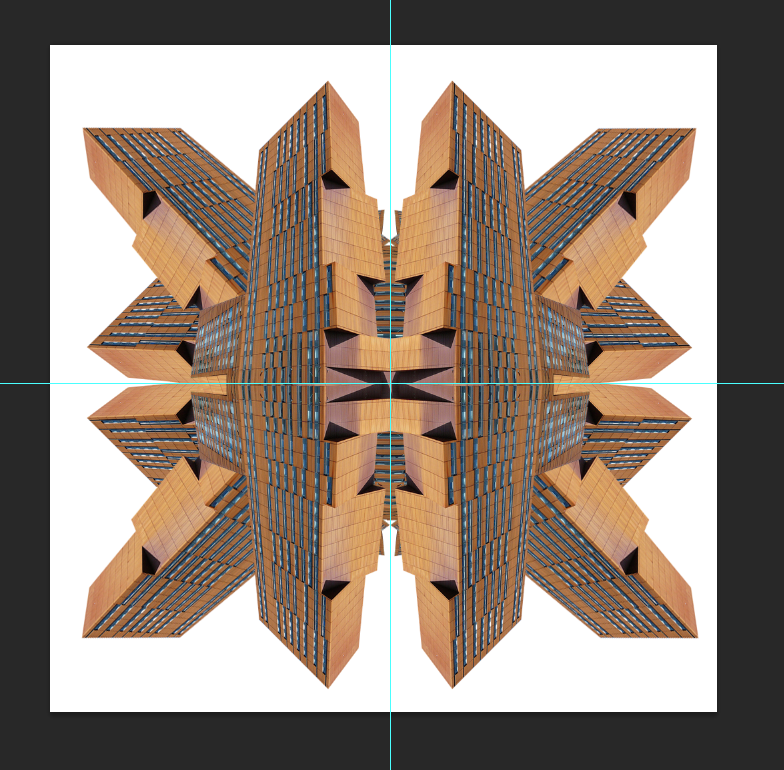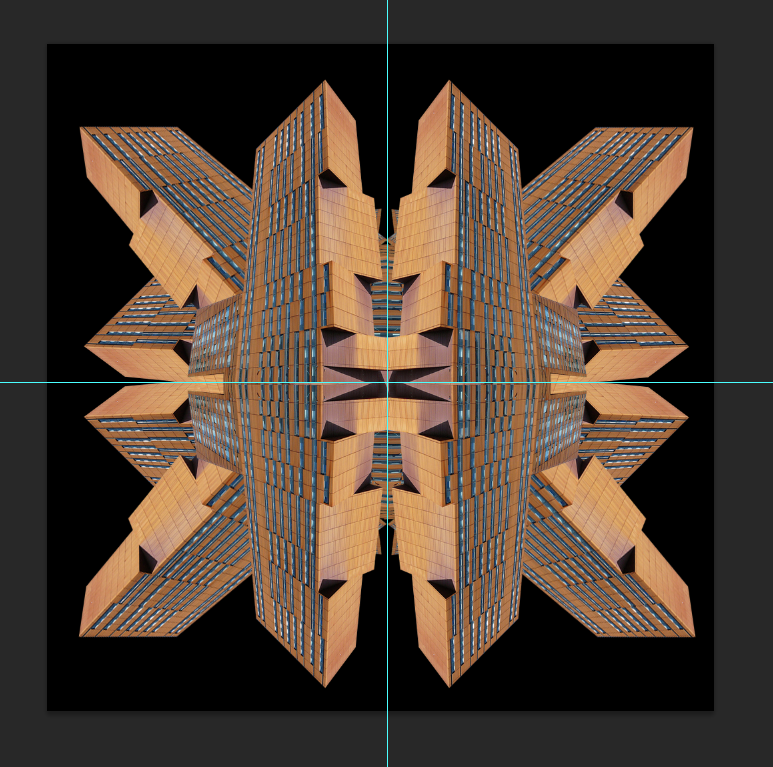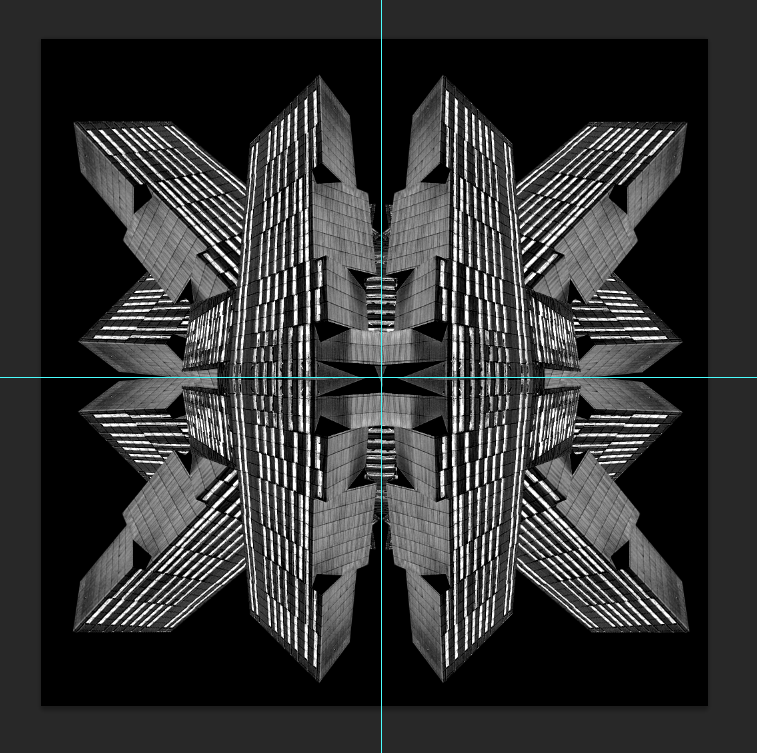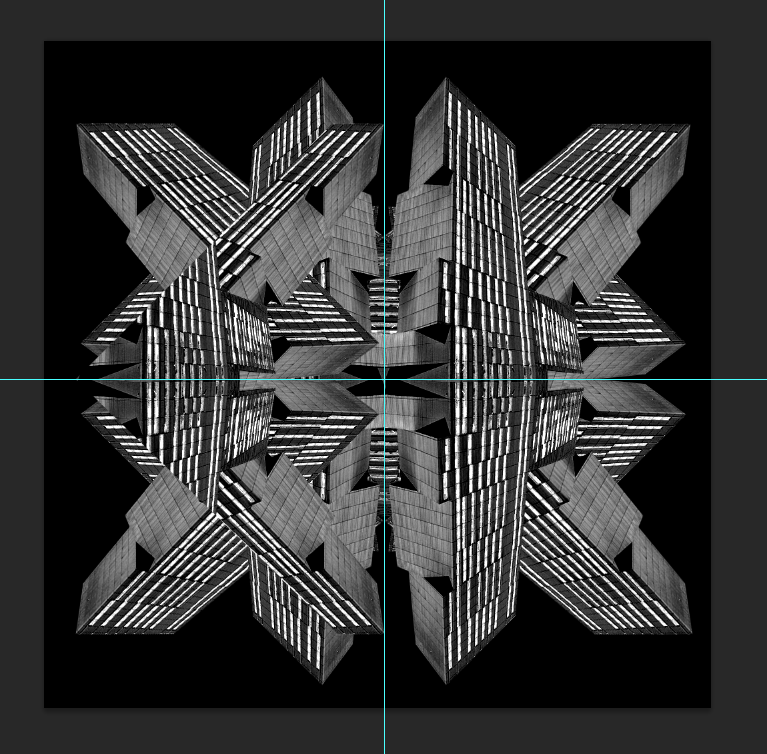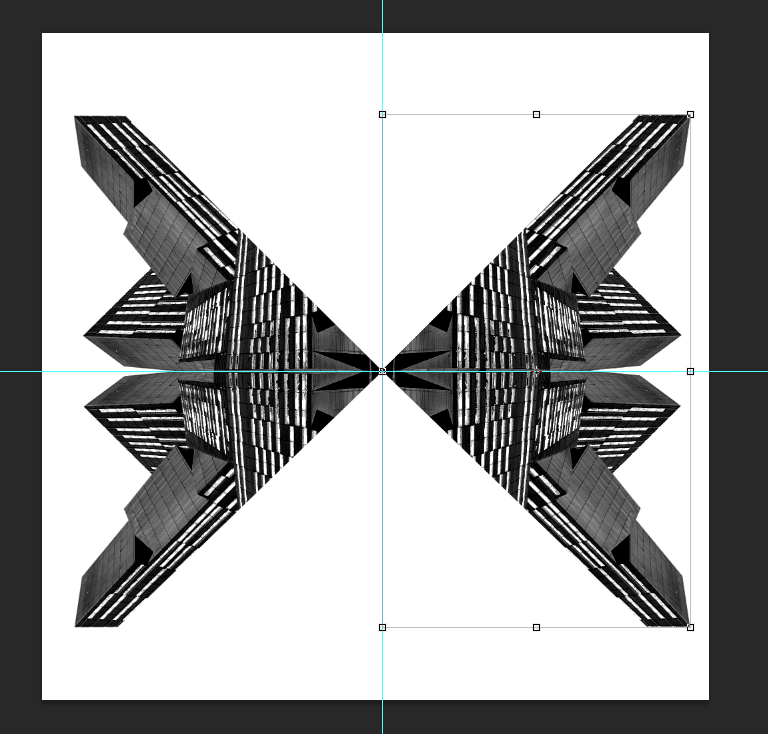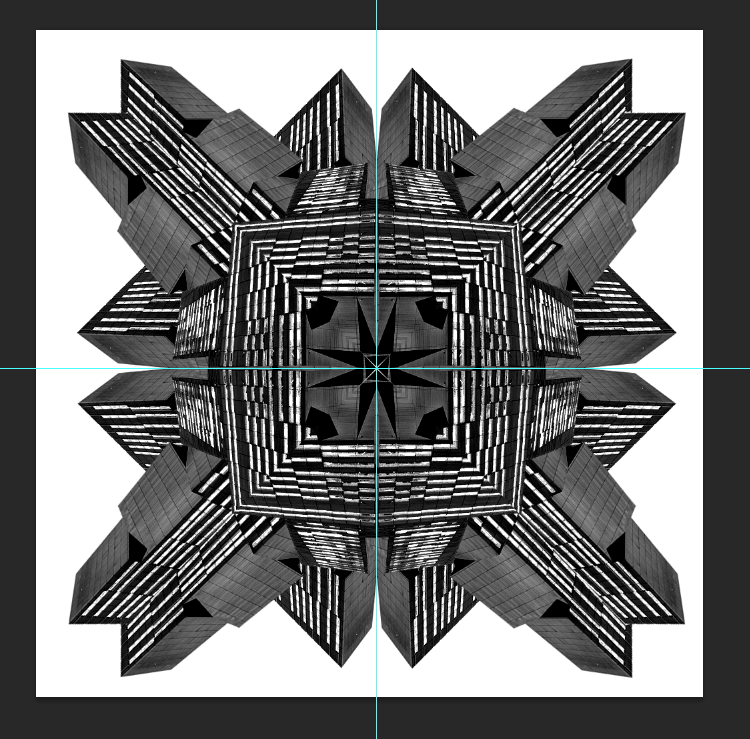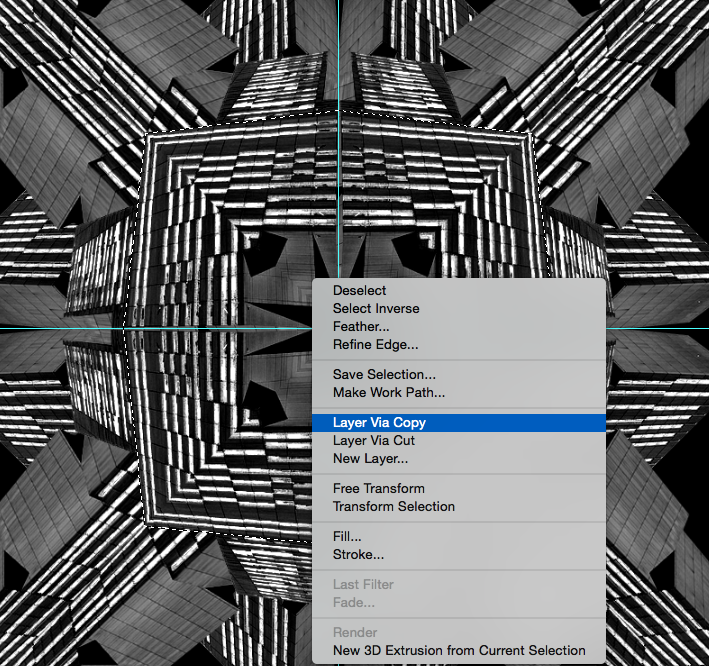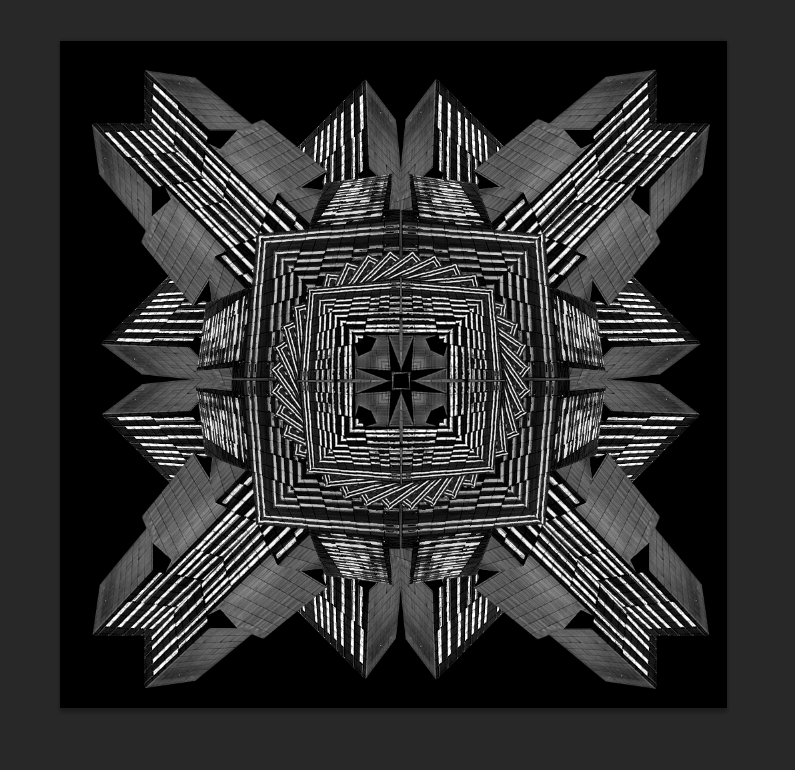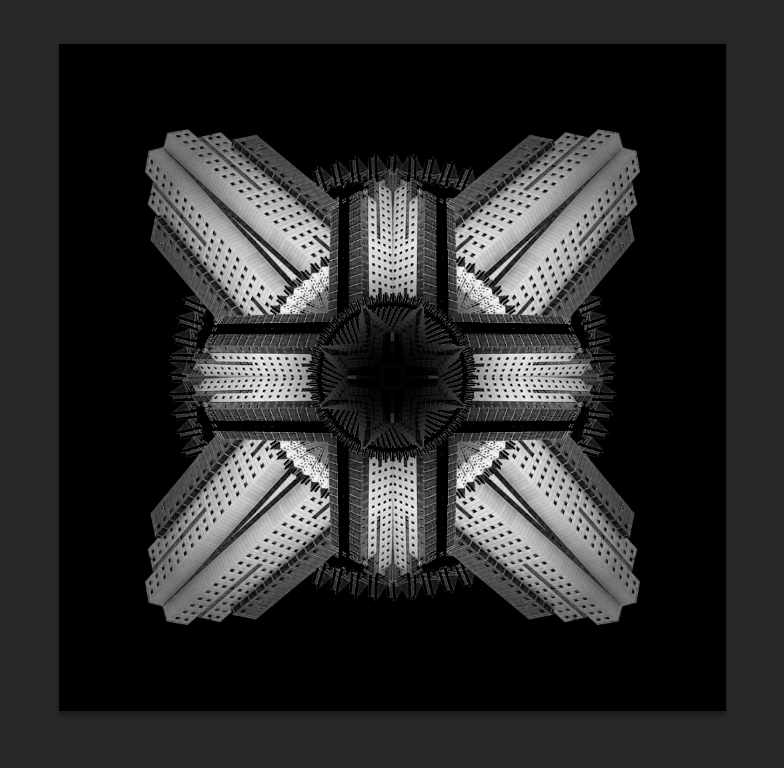This post will explain the process in which I used to give my images the kaleidoscope effect within Photoshop.
Beginning with my 6x4 image, the Holborn Towers.
To begin, I dragged thew image in, flipped and rotated 3 other duplicates of the picture to get the desired effect.
Then by using the marque tool, I selected a triangular portion of the whole image and flipped it vertically.
Then with he remaining sides, repeated the step and the image below shows the end result once I'd moved it into position.
Here is the finished piece without any changes.
To give the image a bit more backbone. I used the magic wand to select all the white and deleted it. Then by using the square tool, I created a black background behind the layer of the building (Which I had now merged as I was happy to flatten it.
Whilst I like the effect adding a black background gave the image, I think the image looked too pure keeping the colour. So I converted it to black and white and then repeated the buildings to make it look as if there was a circle within the outer rectangles.
To give the image more of an impact, I upped the saturation by +50.
Finally repeating the image once more made it look like an optical illusion, something of which I wanted to reflect within the final outcomes.
7x5 image, Broadcasting Tower.
This was made using a very similar technique to the one above so I won't go into great depth on how it was made.
Step 1 shows the repetition of the original image being rotated/flipped.
Step 2 adding the black background.
Step 3 applying a black and white filter.
Step 4 cutting the corner in which I think shows the most diversity in shape via the polygonal lasso.
Step 5 shows the repetition stages to resemble the kaleidoscope effect correctly.
Step 6 shows how the final pieces go together, Kind of like a jigsaw puzzle.
Step 7 is showing how I selected the inner square portion using the polygonal lasso, then creating a new layer via copy.
Finally, Step 8 is where I made the previous selection smaller and repeated it to create a circle in the centre of the image.
8x6, Opal 3 Accommodation.
Same applies to the other 2 images, along with different shapes to give a bit of diversity within the series.
This is probably my favourite out of the three as it shows a good range of dark and light colours yet not as sharply as the broadcasting tower image. Hence the reason I have chosen to this to represent the largest photo frame of the three, 8x6 inches.



















